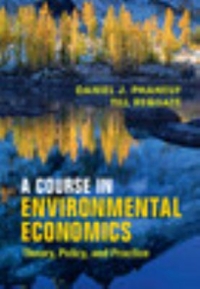Our model of pollution in this chapter assumed that emissions are a pure private bad, and that
Question:
Our model of pollution in this chapter assumed that emissions are a pure private bad, and that people have no ability to protect themselves from the adverse consequences of exposure. In reality, individuals can often take private action to mitigate the effective level of pollution. For example, one can stay inside during high ground-level ozone alerts. Consider a generalization of our model in which effective emissions are ε(E, di), where ∂ε(Edi)/∂E> 0 and di is the amount of time person i devotes to defensive action, such that  ∂ε(E, di)/∂di Ui [Xi, zi ε, (E,di)], and the labor constraint in the economy is l=lx+lz+d1+d2. The production side of the economy is unchanged.
∂ε(E, di)/∂di Ui [Xi, zi ε, (E,di)], and the labor constraint in the economy is l=lx+lz+d1+d2. The production side of the economy is unchanged.
(a) Derive and interpret the Pareto optimum conditions for this economy.
(b) Consider a free market, competitive economy in which each person is endowed with an amount of time T. The person sells time in the labor market at wage w, earns income to spend on x and z, and also uses time (at an opportunity cost of w) to defend against pollution. Under these assumptions each person’s maximization problem is given by:

Derive the conditions for a competitive equilibrium. How do they compare to the Pareto optimum? Is a Pigouvian tax necessary? If so, what form does it take? Is this different from Eq. (1.15)? Is some sort of intervention also necessary to assure the efficient level of defensive effort?
Equation 1.15

Step by Step Answer:

A Course In Environmental Economics
ISBN: 9781316866818
1st Edition
Authors: Daniel J Phaneuf, Till Requate





